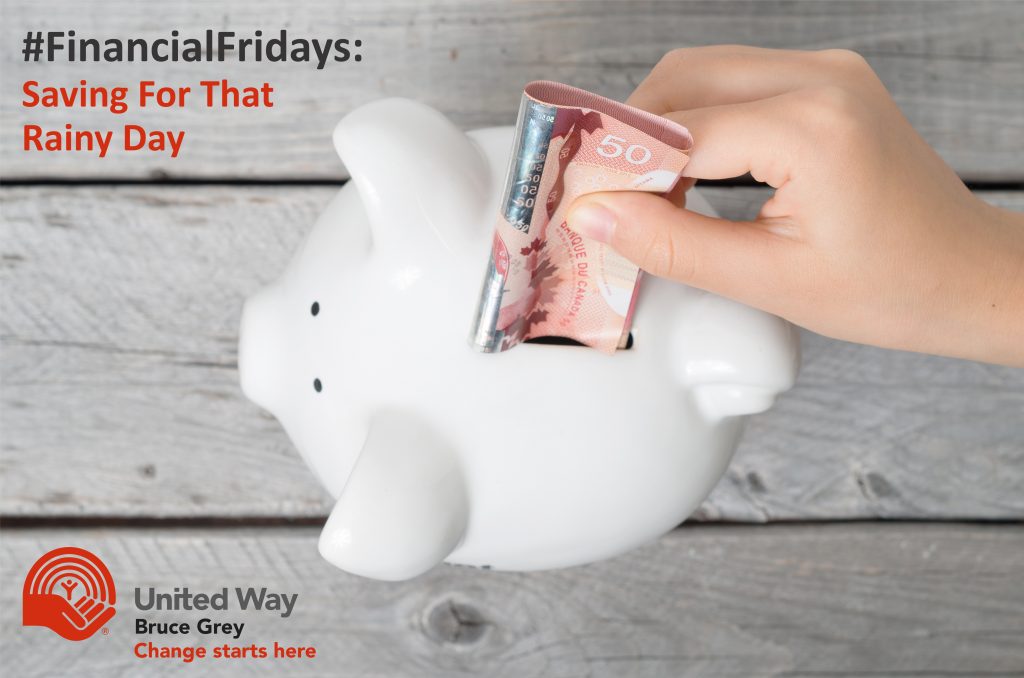#FinancialFridays: Saving For That Rainy Day.

“Pay yourself first.”
This is a mantra that is used to help personal finances.
What does it mean?
This means putting money away for emergencies. Pick an amount – any amount – and put it in a separate account every month. Make this non-negotiable. You can put it in a regular savings account or into a Tax-Free Savings Account (TFSA). The purpose of the money is to be available when you have an emergency.
Make sure you define for yourself what you mean by an emergency. Is it for unexpected car repairs or if you leave a job and you need to wait a month for your ODSP payments to start again? What would an emergency in your life look like? Make sure your family knows that this is emergency money and will only be used for emergencies.
When you have an emergency fund, it helps you limit the need to use payday loan companies and other high interest credit options.
Here is an example of how putting away $5 a month for 2 years would add up:
$5 per month X 24 months = $120 in your emergency fund
If you know you need more in an emergency fund, you can increase the amount you put away each month.
Example. I want $1,000 in an emergency fund in two years time.
$1,000 Divided by 24 months = $42 per month.
I would need to put away $42 per month for 24 months.
If that isn’t a realistic amount for your budget, you can change the timeline.
$1,000 Divided by 36 months = $28 per month.
I would need to put away $28 per month for 36 months.
If you need help getting your finances back on track or would like budgeting advice, reach out to Caroline, our Financial Literacy Program Coordinator at advice@unitedwaybg.com or 519-376-1560. She can help you look at your financial situation and decide on a path forward.
To see past #FinancialFridays blog posts on a variety of money related topics, visit:
https://unitedwayofbrucegrey.com/services-offered/financial-literacy-budgeting-etc/financialfridays-blog

